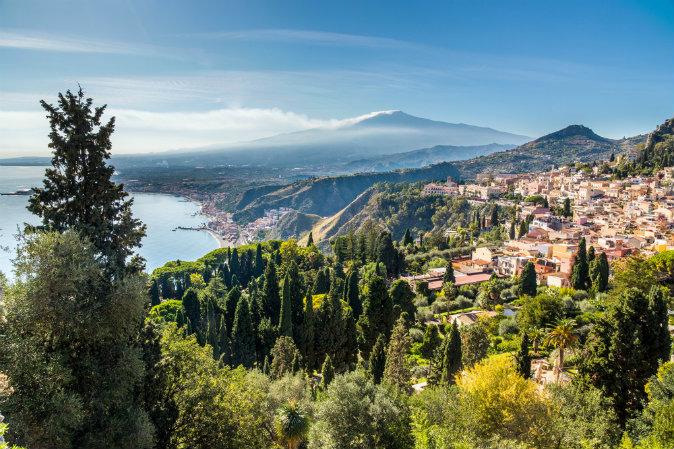The picturesque Mediterranean town of Taormina, also called the “Pearl of the Ionian”, can be easily visited on foot in one single day. But be warned, the stairways, alleyways, small squares, picturesque facades and balconies adorned with flowers, views to die for and the wonderful climate even in winter could make you decide to stay some more days in Taormina.
Our day starts in the morning at the Porta Catania, the old town gate towards Catania and Mount Etna, with a typical Sicilian breakfast, a granita al caffè with brioche (half frozen coffee with whipped cream underneath and on top, and a sweet-bread), at the Bar Luraleo No. 2 on Piazza San Antonio. This calories-bomb-start into the day provides you with the energy needed to complete your town stroll.


